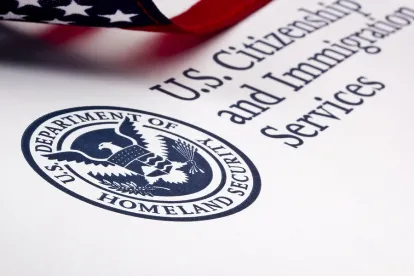In support of its efforts to combat H-1B fraud and consistent with President Trump’s Buy American Hire American initiative, the U.S. Citizenship and Immigration Services (USCIS) will now require employers sponsoring H-1B workers at third-party worksites to include additional information and documentation in their H-1B filings. The new policy memorandum “Contracts and Itineraries Requirements for H-1B Petitions Involving Third-Party Worksites", effective Feb. 22, 2018, largely formalizes existing USCIS policy on H-1B petitions involving third-party worksites, but also spells out new requirements regarding end-client letters and itineraries.
USCIS indicates that this new memo is a continuation of USCIS’s previous policy memo on third-party worksite H-1B petitions from Jan. 8, 2010, “Determining the Employer-Employee Relationship for Adjudication of H-1B Petitions, Including Third-Party Site Placements” (also known as the Employer-Employee Memo) and that employers should provide the additional documentation and information described in the memo in order to show by a preponderance of the evidence that (1) the H-1B worker will be employed in a specialty occupation; and (2) the employer will maintain an employer-employee relationship with the H-1B worker for the duration of the requested employment period. In short, the employer must establish that it has “specific and non-speculative qualifying assignments in a specialty occupation for the [employee] for the entire time requested on the petition.”
Companies that sponsor H-1B employees working at third-party worksites will recognize much of the additional evidence described in this memo as USCIS routinely requests these documents in Requests for Evidence. To prove that the H-1B worker at a third-party worksite will be employed in a specialty occupation and that the employer-employee relationship exists, the memo says that employers should submit contracts and work orders, work product, and contractual agreements related to the H-1B employee’s placement. While an end-client letter is not a new requirement, the memo specifies that the end-client letter should include a detailed description of the H-1B employee’s job duties, the job requirements, the duration of the job, the salary, hours worked, benefits, and information about who will supervise the H-1B employee. It is sometimes difficult for H-1B employers to obtain end-client letters and requiring so much information in a letter will make the process more difficult. It is also unclear why an end-client would have detailed information about an H-1B employee’s employment since the end-client is not the employer. Requiring an end-client to provide this information about an H-1B visa holder providing services at its facility also raises concerns about joint employment.
Similarly, USCIS often requests itineraries in Requests for Evidence issued on third-party worksite H-1B petitions. The memo confirms the itinerary is a regulatory requirements and that employers must provide detailed itineraries for each worksite listed in the petition or the petition will be denied.



 />i
/>i

